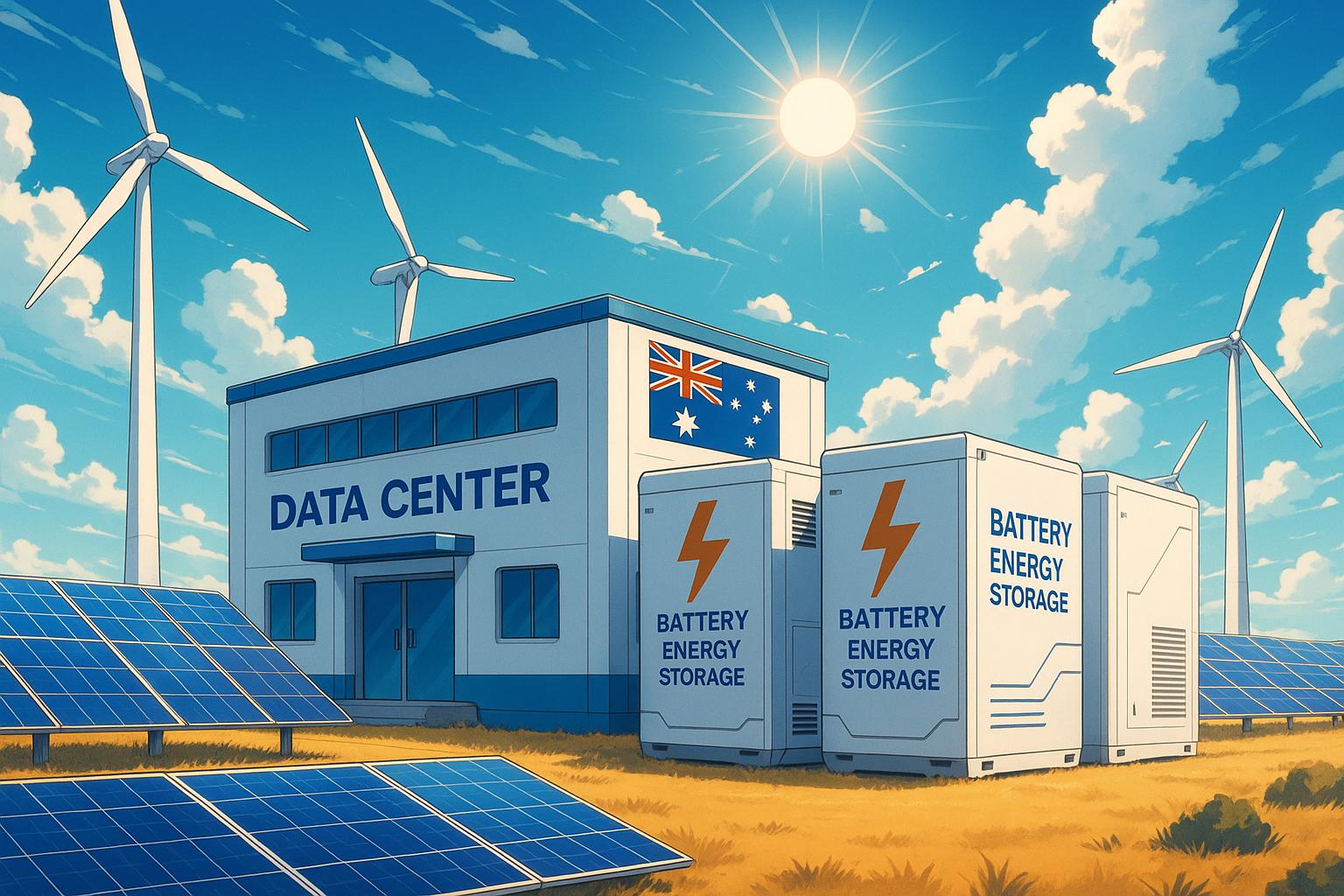Microsoft, Google, and Amazon push for swift government action on energy-storage infrastructure to support Australia’s renewable targets and meet the soaring power needs of data centres amid the transition from coal to clean energy.
The push for enhanced energy-storage solutions in Australia has gained significant momentum, spurred on by insights from leading technology giants such as Microsoft, Google, and Amazon. Following the Coalition’s recent electoral defeat, these companies are urging the Albanese government to prioritise energy-storage projects capable of delivering consistent power to data centres, a crucial requirement as the nation strides towards its 82 per cent renewable energy target. The shift away from coal towards renewables has highlighted the essential need for robust infrastructure to support this transition, especially given the rising demand from power-intensive sectors.
Data centres, which store and manage vast amounts of digital information, are expected to play a pivotal role in Australia’s energy landscape. As artificial intelligence applications proliferate, these facilities are experiencing an exponential increase in power requirements to support their day-to-day operations. This growing reliance on digital infrastructure underscores the importance of integrating effective energy storage to mitigate the potential instability that comes with a grid increasingly reliant on variable renewable sources like solar and wind.
According to the Australian Energy Market Operator, a fundamental component of this renewable transition is the establishment of advanced energy-storage solutions. As solar and wind energy become predominant, fluctuating energy supply presents challenges that must be addressed to ensure reliability and grid stability. The successful integration of energy-storage projects is seen as vital for accommodating the energy demands of not only data centres but also other sectors poised for electrification, like electric vehicles, which further contributes to the pressure on the national grid.
In light of these developments, the government’s calls for investment in energy-storage systems align with efforts to engage the superannuation sector in funding projects that can deliver reliable, long-term benefits. As industry leaders emphasise the necessity for such infrastructure, experts continue to stress that immediate and comprehensive investments are crucial for achieving energy stability. Without this framework, fulfilling the ambitious renewable targets while supporting burgeoning technology industries may become increasingly difficult.
The Australian government’s Energy Storage Roadmap articulates this urgency by outlining strategies designed to enhance the deployment of energy storage technology. This initiative aims not only to accommodate the growing demands from enterprises reliant on constant energy but also to optimise the use of renewable sources by ensuring that excess energy generated can be effectively stored and utilised during periods of low generation.
As the nation navigates this transformative period, the need for a sophisticated energy-storage infrastructure remains clear. Technology platforms, backed by governmental support, may not only empower a smoother transition to a renewable energy grid but also ensure that Australia remains globally competitive in an increasingly digital world.
 Reference Map:
Reference Map:
Source: Noah Wire Services
- https://www.smh.com.au/business/companies/tech-giants-warn-labor-they-need-more-than-just-sun-wind-and-batteries-20250606-p5m5g2.html – Please view link – unable to able to access data
- https://www.theguardian.com/australia-news/2022/jul/23/australia-renewable-energy-storage-australian-energy-market-operator – The Australian Energy Market Operator has highlighted the necessity for advanced energy-storage solutions as the nation moves towards a majority renewable energy grid. With increasing reliance on solar and wind energy, the importance of energy storage in ensuring reliable and consistent power supplies is underscored. The shift from coal to renewables necessitates robust infrastructure to accommodate fluctuations in energy supply, making energy-storage projects crucial for maintaining grid stability amidst growing demands from sectors such as data centres.
- https://www.reuters.com/business/energy/australia-seeks-energy-storage-investment-2030-renewables-target-2022-09-29/ – Australia’s government is actively seeking investments in energy storage to meet its 2030 renewable energy targets. The superannuation sector is encouraged to back projects that offer efficient energy storage solutions, essential as the country navigates its coal-to-renewable transition. This initiative aligns with the rising demands from power-intensive industries, including technology giants that need reliable energy for their operations, particularly in the data storage sector.
- https://www.businessinsider.com/why-australia-needs-more-energy-storage-to-meet-renewable-targets-2021-3 – As Australia intensifies its shift to renewable energy, experts stress the urgent need for energy storage options to balance supply and demand. With ambitious renewable energy goals, including an 82% target, energy storage is vital to ensure stability in power supply during variable weather conditions. The article emphasises that accommodating future power demands, including those from data centres, requires immediate investment in comprehensive energy storage systems that can deliver consistent power.
- https://www.sustainabilitymatters.net.au/content/energy/news/australia-needs-energy-storage-applications-to-handle-renewables-connection-1031617922 – The reliance on renewable energy sources like solar and wind brings significant challenges for Australia’s energy infrastructure. This article discusses how energy storage facilities are essential in managing energy supply from these sources, particularly for handling fluctuations in power generation. The importance is magnified in the context of rising power demands from data centres, which necessitate constant and reliable energy supply to function optimally.
- https://www.abc.net.au/news/2021-06-14/australian-renewables-energy-storage-vehicles/100226332 – Australia’s roadmap to a sustainable energy future highlights the role of energy storage as fundamental in achieving renewable energy targets. This report addresses the growing power demands from data centres and electric vehicles, underscoring the necessity of integrating energy storage solutions. The coordinated effort aims to create an energy system capable of sustaining the increasing load from electrifying sectors, ensuring a smooth transition to a predominantly renewable grid.
- https://www.energy.gov.au/publications/australias-energy-storage-roadmap – The Australian government’s Energy Storage Roadmap outlines strategies to enhance the deployment of energy storage infrastructure. The report articulates the critical need for storage technologies in supporting the renewable energy transition, particularly given the increasing energy demands from data centres and similar facilities. By setting clear targets and fostering innovation in energy storage, Australia aims to create a reliable energy landscape that efficiently accommodates its diverse and growing power consumption needs.













